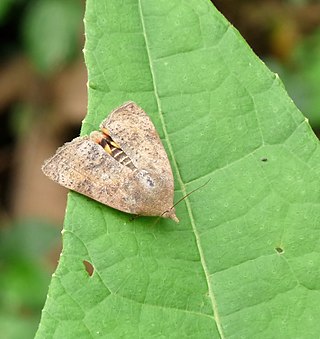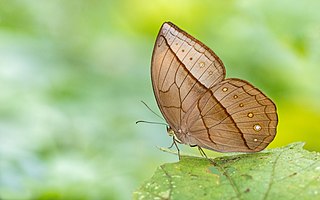
The large tortoiseshell or blackleg tortoiseshell is a butterfly of the family Nymphalidae.

The queen butterfly is a North and South American butterfly in the family Nymphalidae with a wingspan of 80–85 mm. It is orange or brown with black wing borders and small white forewing spots on its dorsal wing surface, and reddish ventral wing surface fairly similar to the dorsal surface. The ventral hindwings have black veins and small white spots in a black border. The male has a black androconial scent patch on its dorsal hindwings. It can be found in meadows, fields, marshes, deserts, and at the edges of forests.

Hyblaeidae are the "teak moths", a family of insects in the Lepidopteran order. The two genera with about 18 species make up one of the two families of the Hyblaeoidea superfamily, which in the past has been included in the Pyraloidea. Recent phylogenetic studies find varying relationships of Hyblaeoidea among Ditrysian Lepidoptera: Mutanen et al. (2010) find the superfamily to group either with Pyraloidea, or – more often – with Thyridoidea or butterflies. The results of Wahlberg et al. (2013) and Heikilä et al. (2015) indicate a sister-group relationship with Pyraloidea.

Amathusia phidippus, the palmking, is a butterfly found in India and Southeast Asia. It belongs to the Satyrinae, a subfamily of the brush-footed butterflies.

Apoprogoninae is a monotypic subfamily of the moth family Sematuridae. Its single genus, Apoprogones, containing a single species, Apoprogones hesperistis, were both described by George Hampson in 1903. It is known from Eswatini and South Africa.

Amathuxidia amythaon, the koh-i-noor, is a butterfly found in Asia. It belongs to the Morphinae, a subfamily of the brush-footed butterflies.

Aemona amathusia, the yellow dryad, is a butterfly found in Asia that belongs to the Morphinae subfamily of the brush-footed butterflies family.
Amathusia andamanensis, the Andaman palmking, is an endemic butterfly found in India that belongs to the Morphinae subfamily of the brush-footed butterflies family.

Amathusiini is a tribe of the nymphalid butterfly subfamily Morphinae. They are large butterflies. They are sometimes treated as a distinct subfamily Amathusiinae or family Amathusiidae.

Boloria titania, the Titania's fritillary or purple bog fritillary, is a butterfly of the subfamily Heliconiinae of the family Nymphalidae.

Hair-pencils and coremata are pheromone signaling structures present in lepidopteran males. Males use hair-pencils in courtship behaviors with females. The pheromones they excrete serve as both aphrodisiacs and tranquilizers to females as well as repellents to conspecific males. Hair-pencil glands are stored inside the male until courtship begins, at which point they are forced out of the body by sclerotized levers present on the abdomen. Coremata are very similar structures. Their exact definition is confused by early descriptions but they are more specifically defined as the internal, glandular, eversible structures that bear the hair-pencils and can be voluntarily inflated with hemolymph or air.

Amathusia is a genus of large forest butterflies with "wingtails" in the family Nymphalidae. They are known as the palmkings and the larvae feed on palms (Arecaceae). Amathusia ranges from the Andaman Islands to Sulawesi.

Aemona is a genus of nymphalid butterflies from Southeast Asia, they are large yellow-brown butterflies resembling dead leaves. The wing apex is acute.

Amathusia perakana, the perak palmking, is a butterfly found in Peninsular Malaya, Sumatra, Borneo and the Natuna Islands. It belongs to the Satyrinae, a subfamily of the brush-footed butterflies.
Amathusia binghami is a butterfly found in Peninsular Malaya and Sumatra It belongs to the Satyrinae, a subfamily of the brush-footed butterflies.
Amathusia friderici, commonly known as bicolor-haired palmking, is a butterfly found in the Indomalayan realm It belongs to the Satyrinae, a subfamily of the brush-footed butterflies.

Amathusia masina, the rusty palmking, is a butterfly found in the Indomalayan realm It belongs to the Satyrinae, a subfamily of the brush-footed butterflies.

Amathusia schoenbergi , the scalling palmking, is a butterfly found in the Indomalayan realm It belongs to the Satyrinae, a subfamily of the brush-footed butterflies.













